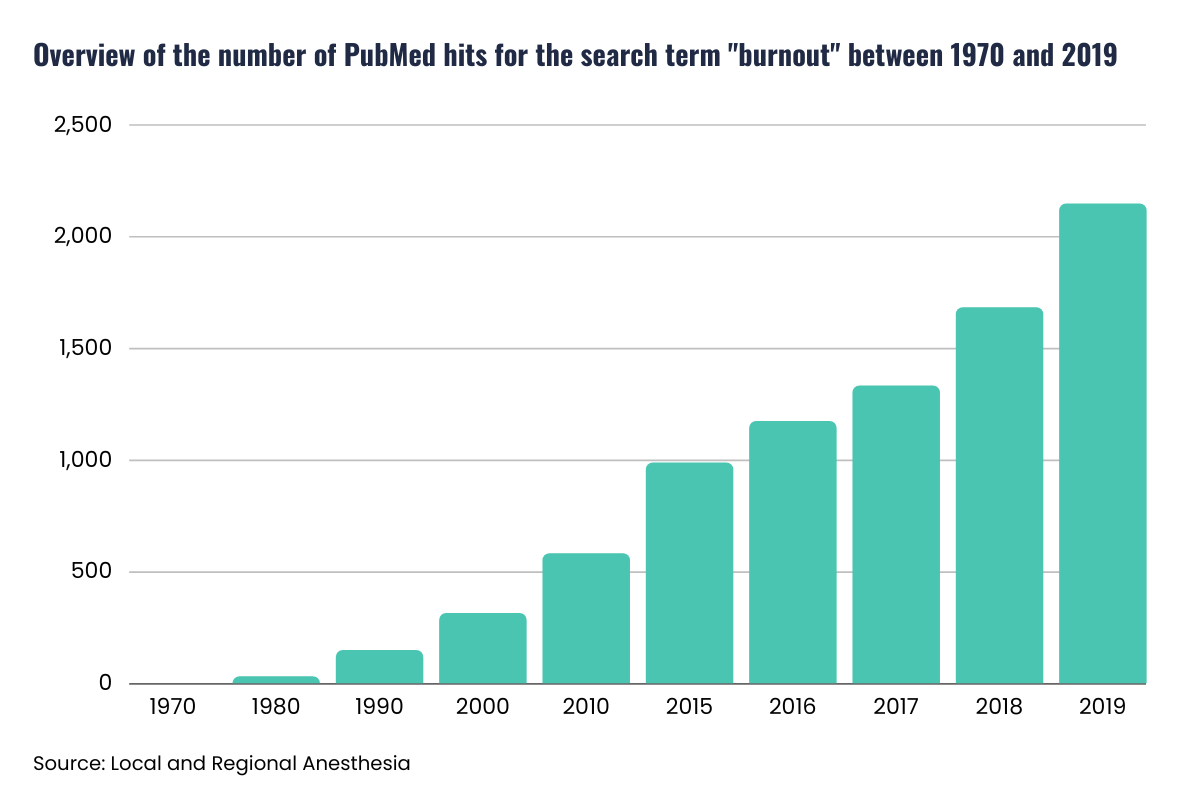4 min read
How Healthcare Risk Management Technology Reduces Healthcare Worker Burnout
Performance Health Partners
December 24, 2024

Burnout in healthcare has become an epidemic, especially in the wake of the COVID-19 pandemic, with burnout rates among healthcare workers as high as 70%. The good news is that healthcare risk management technology is proving to be instrumental in reducing the burdens placed on frontline workers and, consequently, in mitigating the risk of burnout.
What Is Burnout?
Burnout is a work-related stress syndrome resulting from chronic exposure to job stress. According to the World Health Organization, it’s distinguished by three characteristics:
- Feelings of energy depletion or exhaustion
- Increased mental distance from one’s job or feelings of negativism or cynicism related to one’s job
- Reduced professional efficacy
Confronting Healthcare Worker Burnout and Well-Being
Burnout can occur in any profession but healthcare workers are particularly vulnerable.
Well before the pandemic began, the healthcare industry was burdened with an ongoing and exacerbating shortage of providers along with several other systemic issues including:
- Regulation overload
- Inadequate technology usability
- Administrative burdens
- Unmanageable work schedules
As these issues have become more widespread in recent decades, so too has burnout in healthcare.

As the COVID-19 crisis unfolded, the challenges facing an already over-taxed healthcare system only became more apparent. Healthcare workers were tasked with the burden of striving to accommodate surging demand while struggling with staffing shortages, and were regularly exposed to the trauma of watching their patients and colleagues die from the virus.
The politicization of masks and vaccines, and feelings of lack of support from the government and workplaces have also caused healthcare workers to become cynical about their jobs.
This has led to healthcare professionals feeling overworked, exhausted, and ill-equipped to provide patients with the quality care they need and deserve.
Findings in the 2023 Healthcare Worker Safety Survey conducted by Motorola Solutions illustrate that a majority (56%) of survey participants reported that their own or their coworkers' mental health is generally in a worse state now than it was at the apex of the COVID-19 pandemic. Specifically, nurses reported a dramatic decline in mental health, with 24% stating it is significantly worse currently.
Studies show that burnout in healthcare has high personal costs for healthcare workers, as well as high social and economic costs for their organizations and society in general. Personal consequences of burnout for healthcare workers include:
- Occupational injury
- Problematic alcohol use
- Increased risk for mental health symptoms and disorders
- Lack of personal fulfillment
- Career regret
- Suboptimal professional development
- Higher risk of suicide (According to JAMA Psychiatry, nurses are at a higher risk of suicide compared to the general population.)
The increase in burnout is not only negatively impacting our healthcare workforce, but also healthcare quality and safety.
Burnout strains healthcare organizations by increasing clinician absenteeism, presenteeism (working while sick), and turnover, and by reducing individual productivity. It can also lead to an increase in medical errors and healthcare-acquired infections, which can potentially result in malpractice suits with substantial costs for caregivers and hospitals. All these effects have profound consequences for patient and employee safety.
Physicians whose surveys revealed signs of burnout were 2.2 times as likely to report a perceived medical error.
Unfortunately, the issue of healthcare worker burnout doesn’t seem to be stopping anytime soon. As a result of the existing and growing challenges exacerbating burnout, more and more healthcare workers are leaving healthcare all together. There’s an expected shortage of between 54,100 and 139,000 physicians by 2033, and 90% of nurses are considering leaving the profession in the next year.
Leaders can't ignore these numbers – or burnout – any longer. With healthcare workers halfway out the door, they must implement clear solutions to alleviate the drivers of burnout such as lowering nurse-patient staffing ratios and optimizing electronic health records.
Research shows individuals who feel valued by their organization have almost 60% lower odds of experiencing burnout, self-reported anxiety or depression, and likelihood to leave. Therefore, organizations must also prioritize fostering an environment in which healthcare workers feel heard, supported, and valued.
Physicians, nurses, and other healthcare workers must also feel safe and comfortable in communicating unsafe conditions – including those that cause burnout – to leadership, which is only possible in an open, supportive environment.
Fighting Burnout Through Policy
Recognizing the severity and far-reaching consequences of burnout among healthcare professionals, lawmakers are increasingly advocating for policies that support the mental health and well-being of these essential workers.
The tragic suicide of Dr. Lorna Breen, an emergency physician who lost her life early in the COVID-19 pandemic, has catalyzed significant legislative action to combat healthcare worker burnout. In response to this tragedy, President Biden signed the Dr. Lorna Breen Health Care Provider Protection Act into law in March 2022, allocating $100 million to bolster the mental health support for healthcare professionals.
Now, efforts are underway to reauthorize this pivotal legislation for an additional five years, underscoring the ongoing commitment to safeguard the well-being of those on the healthcare frontlines.
J. Corey Feist, Dr. Breen’s brother-in-law and a leading advocate for the law through the Dr. Lorna Breen Heroes’ Foundation, has been instrumental in these efforts. He recently emphasized to lawmakers the critical distinction between depression and occupational burnout, advocating for systemic changes to address the root causes of healthcare worker distress. This bipartisan initiative, with champions in both the Senate and House, aims to ensure that healthcare workers have the necessary support to manage the immense pressures of their roles without fearing repercussions on their careers.
Mitigate Burnout with Healthcare Risk Management Technology
The good news, however, is that healthcare organizations do not have to remedy these systemic challenges on their own. New innovations like healthcare risk management technology have been shown to be influential in reducing the burdens placed on healthcare professionals and, consequently, in mitigating the risk of burnout.
Of course, healthcare risk management technology alone can’t build the type of culture outlined above, but it can certainly help facilitate the events and interactions that make it possible.
Incident reporting software, for example, gives employees a platform to voice their observations, and leadership a tool to stay in tune with staff needs and concerns. An organizational culture where leadership and employees openly discuss concerns and solutions around environment of care, medical error rates, mental health, and more, allows organizations to stay ahead of healthcare burnout and patient safety challenges.
Furthermore, healthcare risk management technology software integrates the traditionally siloed risk management function into one comprehensive solution to simplify processes so frontline workers can spend more time on providing quality care to their patients. It also enables leadership to identify the connections between risks like employee productivity, staffing shortages, and patient safety events, thus bolstering risk management in healthcare. This in turn helps organizations comprehend the causal and contributory factors to risks to quickly implement effective and sustainable improvements.
On a similar note, employees who report safety incidents and events, near misses and good catches, and unsafe conditions want to know that their efforts matter and are making a difference. This is possible with an efficient incident reporting system that is both intuitive and accessible by all stakeholders, from the C-suite to frontline clinicians.
Healthcare burnout can have far-reaching and substantial consequences for patients, employees, and the organization itself. Equally important as providing emotional support is an ongoing investment in healthcare technology that improves efficiencies and supports healthcare professionals.
It’s in everyone’s best interests to listen and learn – and invest in the right tools and support to serve employees as they strive to serve their patients.
Ready to Learn More?
Wondering how risk management technology like incident reporting software can empower your workforce and improve patient safety? Let us show you how. Book a free demo with our team here.


